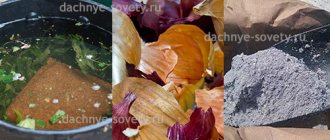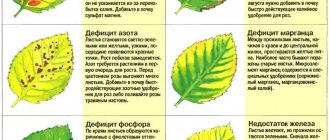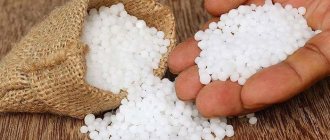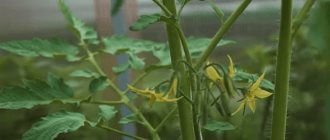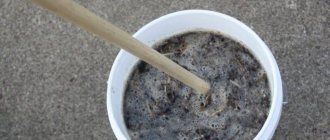There are currently many varieties of tomatoes. They differ in the size of bushes and fruits, the color of ripened fruits, resistance to changing weather conditions and to major diseases. However, there is one requirement that must be met in order to get a large harvest - regular fertilizing under the bushes. The active growth of tomatoes, the formation of ovaries, and the smooth ripening of fruits depend on how correctly this point is fulfilled.
Most fertilizers contain all the essential nutrients that tomatoes require. But most of these drugs are applied “at the root” and are slowly absorbed by cultivated plants (including tomatoes), and vegetables often require certain substances quickly. This also applies to drugs that contain calcium. Tomatoes need fertilizers with calcium, but most of these chemicals slowly decompose in the soil and, accordingly, do not immediately reach the tomato root system. And in many cases, plants need calcium immediately. And here folk recipes for fertilizers from improvised means, which are almost always found in the garden, come to the rescue. Infusions and decoctions of such substances are safe for humans, beneficial for soil and plants, and do not accumulate chemicals (including nitrates) in vegetables.
Why do tomatoes need calcium?
Calcium (Ca) is an important chemical element for the development, growth, and fruiting of tomatoes. They need it at all stages of the growing season:
- At the stage of sowing and germination of seeds, calcium activates the processes of consumption of proteins contained in them, which contributes to the timely emergence of seedlings. Important! If there is a lack of calcium in the soil, the development of the root system of seedlings slows down and hairs do not grow on it.
- Calcium, together with potassium, phosphorus, and nitrogen, stimulates the development of the tomato bush, affects the appearance of ovaries and the formation of fruits.
Attention! Symptoms of calcium deficiency in tomatoes are blossom end rot, death of the growing points of the bush and its roots, falling of buds and ovaries.
The significant role of calcium is manifested in creating growing conditions favorable for tomatoes:
- this component compensates for the influence of macro- and microelements found in the soil on the growth processes of tomatoes;
- calcium normalizes nutrient metabolism in the plant;
- it helps accelerate the processes of decay of organic matter in the soil;
- this is a necessary element in acidified podzolic soils, which are characterized by an increased content of mobile forms of iron, aluminum or manganese, which have a negative effect on plant development - the element binds them into sedentary compounds that are not absorbed by tomatoes;
- calcium is involved in the processes of photosynthesis and carbohydrate transfer.
This chemical component affects the formation of tomatoes. Calcium and magnesium in plant organisms are the basis of the intercellular substance (pectin). In addition, calcium maintains the integrity of cell membranes, takes part in the formation of their walls, and increases the strength of plant tissues. It helps increase the endurance of tomatoes.
Comment! The calcium content in tomatoes is 14 mg/100 g, which corresponds to 1% of the daily requirement of this element for humans.
Signs of calcium deficiency in tomatoes
Calcium deficiency in soil due to natural causes is unlikely. Many gardeners add substances containing this element to the soil - lime, ash, dolomite. But its absorption by plant tissues, including tomatoes, is prevented by excessive fertilization of the soil with nitrogen fertilizers, even such as manure and bird droppings. Its shortage can also be caused by violation of the rules for applying fertilizers based on potassium and manganese.
Another reason for calcium imbalance in tomatoes is their insufficient watering. For root nutrition of plants, it is available in the form of the Ca2+ cation. Tomatoes receive it along with water and send it to areas of consumption (leaves and fruits). In addition, overdrying the soil leads to damage to the root system, which further aggravates the situation.
Attention! Calcium deficiency in tomatoes is more likely to be due to water stress than to low calcium levels in the soil.
If there is not enough element in the tomato cells, the pectin substances in them swell, the walls become slimy, and the plant begins to rot.
By changes in the condition of the bush organs, a calcium deficiency can be diagnosed:
- Roots. The roots of tomatoes are the first to suffer from calcium deficiency. The process of their development slows down, they degrade and rot.
- Leaves and shoots. Calcium starvation manifests itself in a decrease in the size of young leaves, their deformation, the appearance of chlorotic spotting and the subsequent death of the plant. The edges of the leaf blades curl and look “scorched.” Mature leaves acquire a richer dark green hue and increase in size. The tops of the shoots lighten and gradually die off. The flowers on the bush fall off.
- Fruit. When growing tomatoes, the most informative sign of calcium deficiency is blossom end rot that occurs on the fruit. Initially, it appears in the form of dark gray spots on their tops. Gradually the defect spreads over a large area.
Top rot is intensified by factors such as increased temperature and humidity, and soil salinity. This situation leads to the loss of a significant part of the tomatoes.
Important! Blossom rot is not an infectious disease of tomatoes, but a consequence of calcium deficiency. Tomatoes growing in open ground and in greenhouses are susceptible to it. One of the preventive measures is compliance with the watering regime.
Symptoms of deficiency
The main symptoms of calcium deficiency in different types of vegetable crops are approximately the same. And tomatoes are no exception.
If tomato bushes begin to lack this chemical element, then the top of the fruit that begins to ripen becomes gray or brown. At the initial stage, such spots are small in size, but if vegetable growers do not begin to add fertilizers containing calcium to the soil, then the spots begin to grow and spread to almost the entire fruit.
This disease is not infectious; it is called blossom end rot and is caused by a lack of calcium in plants. Currently, there are tomato varieties that are susceptible to this disease to a greater or lesser extent.
Important! Tomatoes whose fruits have an elongated shape are more susceptible to blossom end rot.
Even if fertilizers containing calcium were added to the soil during digging in the fall, it is not a fact that the tomatoes will not be attacked by blossom end rot. If there is an excess of fertilizers containing nitrogen or potassium in the soil, calcium supplements will not be absorbed by the tomatoes. In this case, foliar fertilizing with calcium fertilizers can help save tomato bushes from disease. Tomato foliage will absorb calcium through the stomata and blossom end rot will recede.
If no measures are taken to combat the disease, then other signs of blossom end rot appear:
- young foliage and apical buds become too light, and the leaves at the base of the bush remain the same color (rich green);
- tomato bushes stop growing and developing;
- the foliage begins to curl;
- the tops of the shoots dry out and die, necrotic spots appear on the foliage.
Excess potassium, nitrogen and magnesium often lead to the fact that calcium fertilizers are not absorbed by vegetable plants.
Therefore, experienced vegetable growers recommend observing the dosage of all types of fertilizers, so that an excess of some macro and micro fertilizers does not lead to poor absorption of other nutrients.
But if you add too much fertilizer containing calcium, then the tomatoes will poorly absorb fertilizers containing nitrogen, potassium, magnesium, iron and boron. The following symptoms are characteristic of such a lack of chemical elements:
- spots of a lighter shade and indefinite size appear on the foliage;
- the veins themselves remain the usual green color.
Calcium fertilizers for tomatoes
To compensate for calcium deficiency in tomatoes, they need to be fertilized with fertilizers containing this element. You can help the plant recover as quickly as possible by using a combination of root and foliar methods of application. Modern preparations contain calcium in chelated form.
Calcium nitrate
Calcium nitrate is a compound of lime and nitrogen (calcium nitrate). Its use will make up for the calcium deficiency in tomatoes. The lime content in this fertilizer is 27%, nitrogen – 14.9%. The fertilizer is produced in the form of white granules. Before processing the bushes, it is diluted in water. For preventive purposes, saltpeter is applied in the spring when digging the soil.
Advice! The drug has the ability to absorb moisture well, so it should be stored in airtight packaging.
This calcium fertilizer for tomatoes does not oxidize the soil, which makes it suitable for soils with high acidity. The positive effect of fertilizer on tomatoes is manifested:
- in accelerating photosynthesis and improving the general condition of the plant;
- promoting the growth of green mass and stimulating plant processes;
- reducing the ripening time of tomatoes;
- increasing yield by 10 - 15%.
Adding calcium nitrate to the soil improves seed germination, stimulates the development of the root system, and increases the resistance of tomatoes to temperature changes, diseases and pests. An important property of the fertilizer is its effect on the quality of the fruit - they have a good presentation, high taste properties, and their shelf life increases.
Spraying tomato bushes with calcium nitrate prevents blossom end rot. For this purpose, use a 1% solution of the drug in water (100 g per 10 l). It is sprayed evenly over the crown.
To stimulate the formation of ovaries on tomatoes, prepare a mixture:
- calcium nitrate – 20 g;
- water – 10 l;
- manure – 0.5 l.
Important! Failure to follow the rules for applying calcium nitrate negatively affects the root system of tomatoes.
Calcium chloride
You can spray tomatoes with calcium chloride (CaCl2). It is sold in pharmacies in the form of tablets or solution. For processing it is convenient to use the drug in ampoules. It is easily diluted in water in the proportion of 2 ampoules of 5 ml per 10 liters of water. Its effectiveness can be increased by adding wood ash to the solution. Some gardeners use calcium gluconate.
Dolomite flour
Dolomite flour is a mixture of calcium and magnesium carbonates. It is used for liming acidic soils and replenishing calcium deficiency. Fertilizer is applied at the rate of 0.5-0.6 kg per 1 m2. If the soils are highly acidified, the dose of the mixture is doubled.
Comment! The components of dolomite flour have the ability to neutralize heavy metals and bind radionuclides.
Slaked lime
Slaked lime (fluff, calcium hydroxide) is obtained by processing (slaking) freshly burnt limestone with water. The main purpose of its use in gardening is to neutralize acidic soils. It is rarely used to compensate for the lack of calcium in tomatoes. This fertilizer helps:
- saturating the soil with necessary elements;
- loosening the soil, which facilitates oxygen access to plant roots;
- improvement of metabolic processes in tomatoes;
- reducing the symptoms of calcium starvation.
Attention! Quicklime cannot be used as fertilizer. It negatively affects the condition of the soil and significantly reduces its fertility.
Advice! You can extinguish the substance at home. To do this, 10 kg of quicklime is poured into 5 liters of water. It is important to consider that the interaction reaction occurs with the release of heat. After slaking, the lime is allowed to dry, then shaken vigorously until a powder forms.
When processing tomatoes, fluff can burn their roots and the table of the bush. Therefore, direct contact of the substance with plant organs should be avoided. It is best used to prevent calcium deficiency by adding it to the soil in the fall in the amount of 0.5 kg per 1 m2 (for loams - 0.8 kg per 1 m2).
Chalk
Chalk is a type of limestone (CaCO3), which is mainly used to neutralize soil acidity. It is used in crushed form in an amount of 0.3 kg per 1 m2. In spring or autumn, when digging, chalk is added to the soil, which helps prevent a lack of calcium in tomatoes. In this case, it is important to distribute the substance evenly over the surface and in the soil layer.
Brexil calcium
This is a modern fertilizer in which calcium ions are in chelated form. They are surrounded by a chelate shell, which protects calcium from neutralization in the soil. This compound is completely absorbed by the tomato, broken down and consumed by it. Brexil calcium is effective for foliar treatment of tomatoes.
Important! The effectiveness of foliar feeding of tomatoes with calcium brexil is 10 times higher than with calcium nitrate.
Kalbit S
In addition to the fast and effective delivery of calcium to tomato tissues during foliar feeding, Kalbit C has the ability to improve the structure of the fruit. It is released in liquid form. In this preparation, calcium is also in chelated form. It, reacting with the pectin substances of the cells, glues their walls, which contributes to:
- increase in fruit quality;
- increasing the ability of tomatoes to withstand long-term storage;
- improving transportability properties.
To treat blossom end rot and saturate tomatoes with calcium, make a solution based on a proportion of 2 - 3 liters per 100 liters of water. Tomatoes are processed every 8 - 10 days until the ovaries begin to form.
Important! Kalbit C should not be mixed with other fertilizers, especially those based on phosphorus and sulfur.
Vuksal Calcium
Vuksal Calcium is a new generation complex fertilizer. It is produced in the form of a suspension. In addition to calcium, it contains nitrogen, magnesium and microelements that have a positive effect on the yield and quality of tomatoes. In addition to blossom end rot, the fertilizer effectively prevents bitter pitting, glassiness, and cracking of tomatoes.
The most important components in its composition (Cu, Zn, Fe, Mn) are chelated. Thanks to this technology, they completely penetrate the plant tissue and safely eliminate the deficiency of the relevant elements.
Attention! Vuscal Calcium is compatible with most pesticides.
Wood ash
The main advantages of wood ash as a fertilizer for tomatoes are its naturalness, availability and low cost. It contains calcium in different compounds, which makes it possible to comprehensively solve the problem of its deficiency:
- carbonate normalizes the course of biochemical processes in the plant;
- silicate promotes the complete absorption of beneficial components from soil and fertilizers and their retention in cells;
- sulfate stimulates the growth processes of tomatoes in a prolonged manner;
- chloride participates in the process of photosynthesis, and also reacts with soil ammonium nitrate and turns into salts of nitric acid, necessary for the development of tomatoes.
Attention! In addition to calcium compounds, wood ash contains magnesium and sodium compounds. The chemical composition of this fertilizer may vary. It depends on the quality of the source material for its production.
Wood ash has a positive effect on tomatoes at all stages of development:
- Before planting, tomato seeds are soaked in a solution of wood ash (1 tbsp in 2 liters of hot water), saturating them with useful substances.
- Seedlings are fed with this fertilizer, adding it to the soil for growing (1 tbsp per 1 kg of land) or directly into the holes when planting (2 tbsp per bush).
- Adult tomatoes are fertilized with wood ash during flowering and fruiting, thereby compensating for the lack of calcium in them.
Advice! Store wood ash in a dry place. Wet fertilizer loses its properties.
When and why is it needed?
Periods during which plant needs are especially high:
- During seed germination (if there is little element, germination will decrease).
- During the growth period (without it, the growing point may die, and the inflorescences will dry out and fall off).
- When fruits ripen (if there is a deficiency, they set poorly, ripen slowly, and remain small).
This microelement also normalizes the composition of the soil, which contains too much iron, manganese and aluminum. The balance is restored, and organic elements are processed more easily and quickly.
Foliar treatment of tomatoes with calcium against blossom end rot is effective. The disease occurs from a lack of microelements.
Folk remedies with calcium for feeding tomatoes
Folk remedies with calcium for feeding tomatoes are wood ash and eggshells. Their application has the following features:
- You can prepare wood ash yourself. To do this, they burn boards, plant residues, and tree branches. The resulting ashes are generously distributed over the area prepared for planting tomatoes, or poured into the holes. A solution is also prepared based on wood ash (3 tbsp per bucket of water). They feed tomatoes at the root. You can also spray their leaves with filtered liquid.
- Eggshells as a calcium-rich fertilizer are often used to feed tomatoes. The shells of three eggs are ground in a mortar, meat grinder or blender, pour in 1 liter of water, and leave until the characteristic smell of hydrogen sulfide appears. The resulting solution is used to irrigate tomato bushes.
Important! Recent studies show that calcium is well absorbed by plants in liquid form, and in egg shells the element is contained in the form of an insoluble salt. Therefore, many gardeners have doubts about the effectiveness and speed of action of this fertilizer.
Rules for using fertilizers
Advice! Before fertilizing, to quickly absorb calcium, tomato bushes are well watered.
High results are achieved by simultaneous root and foliar application of calcium-containing fertilizers.
- Root feeding. Dry or liquid concentrated fertilizers are diluted in water, according to the instructions, and watered at the roots of the tomatoes. It is important to follow the watering rules. The best time for this procedure is early morning. Preventive method - dry calcium-containing fertilizers are distributed between rows, sprinkled under the roots or applied when digging the soil.
- Spraying tomatoes. The first spraying of bushes with calcium-containing fertilizers is carried out 7 - 12 days after planting the seedlings in the ground. Foliar treatment will be carried out in cloudy, windless weather.
Attention! Spraying tomatoes growing in a greenhouse should not be overused. High air humidity provokes the development of diseases. After treating the plants, the greenhouse should be well ventilated.
When working with fertilizers, there are general requirements given in the table that must be met in order not to harm the plants:
| Fertilizer | Application requirement |
| Calcium nitrate | To prevent the accumulation of nitrates in fruits, the drug should be used strictly according to the instructions. |
| Kalbit S | do not combine with the application of phosphorus and sulfur fertilizers. |
| Brexil calcium | do not mix with other calcium-containing fertilizers; the consumption rate (especially for greenhouses) should not exceed 150 g per 100 liters of water. |
| Limestone and dolomite flour | do not combine with ammonium nitrate, superphosphates and urea. |
| Slaked lime | work using personal protective equipment (goggles, gloves, gauze bandage). |
They recommend a set of preventive measures against calcium deficiency in tomatoes:
- follow the watering schedule, do not allow the earthen ball to dry out;
- After moistening, the soil must be loosened;
- on hot days, shade the tomatoes;
- apply fertilizers regularly;
- apply foliar and root feeding in combination;
- To increase the immunity of tomatoes, use growth stimulants.
Potassium deficiency
Potassium deficiency also affects the condition of the leaves. They curl and become more jagged. Mature foliage dries out at the edges and changes color. Dark spots appear, which over time form an edge on the edge of the leaf.
it is necessary to fertilize with saltpeter containing the substance and spray with a solution of calcium chloride.

